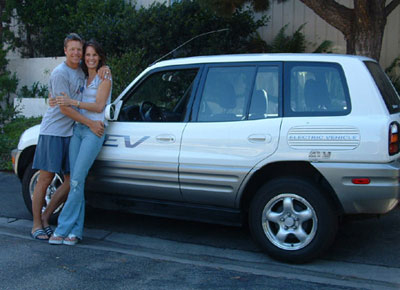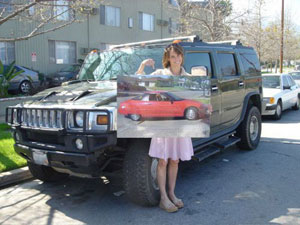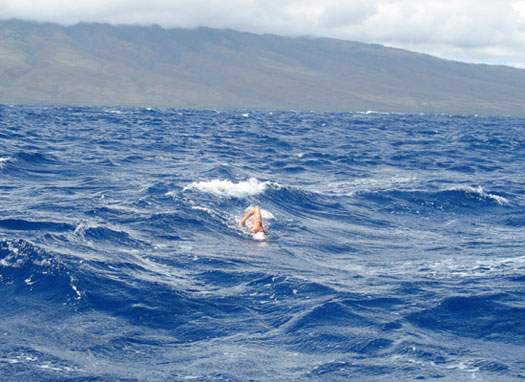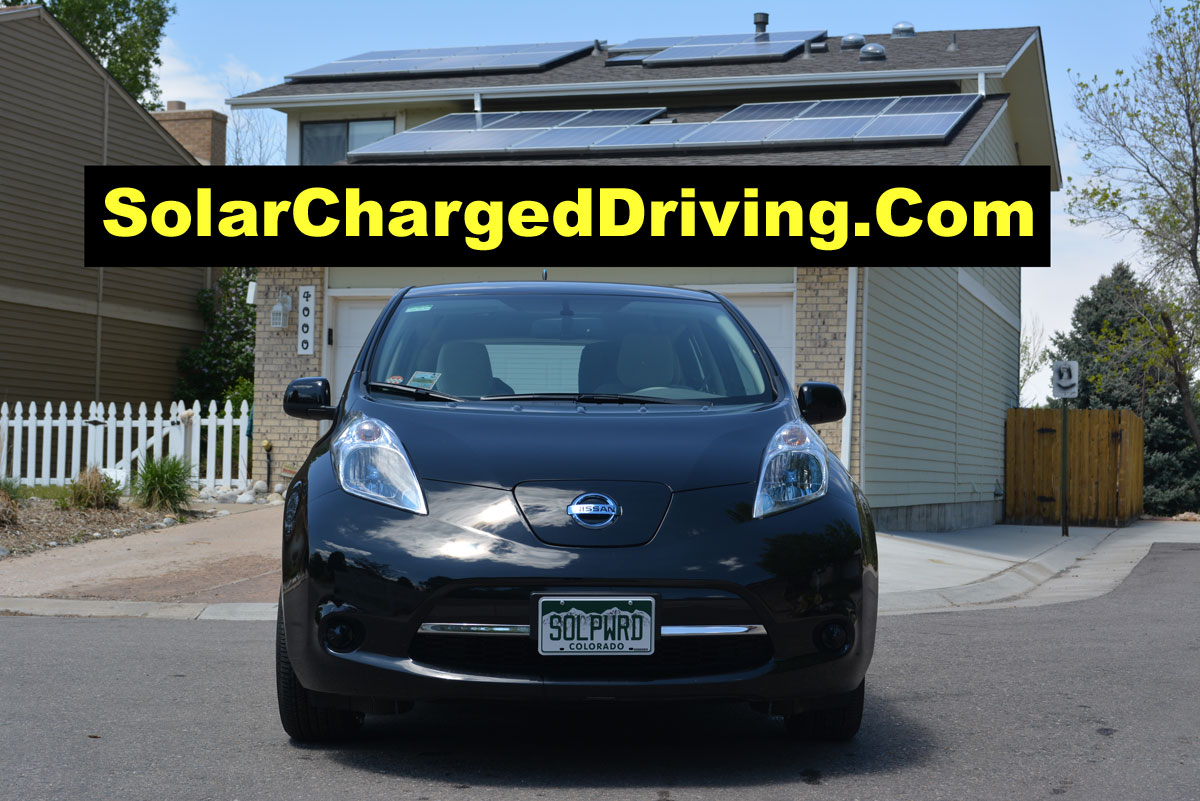 Actress and activist Alexandra Paul believes one of the most important things in life is to live what you believe in.
Actress and activist Alexandra Paul believes one of the most important things in life is to live what you believe in.
And one of the things she believes in most is a greener, cleaner more sustainable world. That’s why she’s been driving an EV (electric vehicle) since 1990.
That’s well before most Americans had even heard of an EV and long before Chris Paine’s now cult-classic documentary film ‘Who Killed the Electric Car?’ – in which Paul plays a starring role as a real-life EV activist – helped drive EVs onto the radar screen in the U.S.
Paul’s dedication to living her environmental ideals also explains why the L.A. actress – perhaps most famous for her role as Stephanie Holden in the hit show Baywatch — sees the solar-EV synergy as so crucial to the future of EVs as well as to the future of humanity and the earth itself.
“I think solar is the answer,” said Paul in a recent phone interview with SolarChargedDriving.Com. “If you’re going to drive an EV and rely on a grid that might be fired by coal, I would say we haven’t gone far enough. Photovoltaic and green power simply have to be part of the EV solution.”
Move from Malibu to L.A.
In fact, Paul was plugged directly into the so-called PV-EV combination in 2004 when she and her husband, triathlon coach Ian Murray lived in Malibu, Calif. There, they drew electricity from a 2.4 kW system to power her EV1 and then a 2001 Toyota RAV4 EV, which Paul still drives today.
“I was on my high [environmental] horse. But when the Exxon Valdez happened, I realized, ‘I’m the reason the tanker was out there.’ I started talking less and walking more. I realized I was part of the problem.”
–Alexandra Paul
However, when Paul and Murray decided to put the house on market in 2004 their real-estate agent suggested that their solar system would actually not add to the value of their home. So the couple decided to take their solar panels with them to L.A.
They didn’t count on the fact that the homeowner’s association for the townhome they purchased had rules against installing solar systems.
Although California law prevents HOA’s from prohibiting homeowners from installing solar panels, Paul and Murray decided that because their roof would only accommodate a 1.8 kW system they wouldn’t battle the HOA to install their solar panels.
 HOA sidetracks solar
HOA sidetracks solar
“We kind of backed off,” recalls Paul. “We weren’t sure if wanted a fight over a system that small. But we’ve been discussing it again. Our (global) energy situation is getting worse and we need to do what we can.”
For now, though, the path to do doing what she can in terms of going solar probably won’t travel across her own roof. Instead, Paul — who says she and Murray would “for sure have solar” on their roof if they owned a single-family home — says she wants to talk to her HOA about possibly installing solar thermal for the community’s pool.
The HOA rules ended Paul’s four-year stint as a solar-charged driver. However it hasn’t diminished her enthusiasm for EVs, or her belief that EVs, and the entire grid, should be powered by renewable forms of energy such as solar and wind.
In fact, she and Murray purchase green power from their utility to ensure that as much as possible of the electricity that powers the 2001 RAV4 EV is generated in a environmentally friendly way.
As for the solar panels that came off Paul’s and Murray’s Malibu home?
They now have a new home on the roof of a Central California vacation home shared by Paul and her family.
Exxon Valdez disaster motivates Paul
The environment, or, really, an environmental disaster, inspired Paul to jump into the world of EV-ing. The year was 1989, and she was zooming around in a 1986 GMC Jimmy. Then came the Exxon Valdez oil tanker spill in Alaska.
“Photovoltaic and green power simply have to be part of the EV solution.”
— Alexandra Paul
“I was on my high [environmental] horse,” recalls Paul. “But when the Exxon Valdez happened, I realized, ‘I’m the reason the tanker was out there.’ I started talking less and walking more. I realized I was part of the problem.”
Soon, Paul had ditched her Jimmy for a 1980s model Datsun, had it outfitted with a battery-pack system, and was off and driving on electricity.
The Datsun could travel just 25 miles on a charge, but it was enough for Paul, who used it for local, everyday driving.
{googleAds}
<div style="float:left">
<script type="text/javascript"><!--
google_ad_client = "pub-7703542917199961";
/* 200x200, created 12/8/09 */
google_ad_slot = "7950368454";
google_ad_width = 200;
google_ad_height = 200;
//-->
</script>
<script type="text/javascript"
src="http://pagead2.googlesyndication.com/pagead/show_ads.js">
</script>
</div>
{/googleAds}Since her custom Datsun-EV days, Paul has owned three additional EVs: A 1993 Volkswagen Rabbit she had customized into an EV, a 1996 GM EV1, which, as those who’ve seen ‘Who Killed the Electric Car?” know, Paul was eventually forced to give up to be crushed along with hundreds of other EV1s, and finally, the 2001 Toyota RAV4 EV.
 Paul’s RAV4 EV no Tesla – but it’s functional
Paul’s RAV4 EV no Tesla – but it’s functional
Paul, who views the functionality and environmental friendliness of cars as far more important than an automobile’s external appearance, says the RAV4 EV has been perfect for her.
“I don’t have much interest in cars other than that they’re electric,” notes Paul.
However, there are some advantages to a fancy car — especially if you want to promote EVs as a crucial component of sustainable living.
While Paul’s RAV4 EV might be a workhorse, it doesn’t get nearly the same attention her GM EV1 once generated. In fact, Paul’s favorite EV moments came while driving the car GM confiscated and crushed.
“I don’t have much interest in cars other than that they’re electric.”
–Alexandra Paul
“When I had the EV1, what I loved about that car is that it looked so unusual that people were attracted to it,” recalls Paul, who drove an EV1 from 1996 to 2003.
Even something as simple as a trip to the grocery store on the way home often took longer with the EV1, explains Paul.
Ogling the GM EV1
“I’d inevitably be late driving home because there would be so many people looking at my car in the parking lot. They were excited. I loved that about the EV1.”
But for all the individual excitement among people who saw Paul’s EV1 in the parking lot, nearly six years after GM confiscated her EV1 – and that of hundreds of other EV1 leases — and destroyed it that excitement has yet to be translated into widespread production of, and availability of, EVs.
With Nissan, Ford and even GM preparing to mass produce EVs and/or PHEVs (plug in hybrid electric vehicles) and promising to have them available to consumers as soon as the fall of 2010, the outlook for EVs and PHEVs would appear to have changed radically.
 But forgive Paul if she’s a bit skeptical and anxious about whether what Chris Paine is labeling ‘Revenge of the Electric Car’ in a new documentary will actually happen.
But forgive Paul if she’s a bit skeptical and anxious about whether what Chris Paine is labeling ‘Revenge of the Electric Car’ in a new documentary will actually happen.
Paul’s been along for the EV ride for a lot longer than many of us – and she’s personally lived frustration EV newbies have not endured.
“I truly will believe automakers are behind EVs when they’re in the showrooms and being sold to customers in a way they sell gas-powered cars to customers,” says Paul.
According to Paul, that’s certainly not how automakers approached pitching EVs the first time around.
Indeed, Paul’s husband and some of her friends have experienced the seeming contradiction of a car salesperson trying to discourage her from buying an automobile.
A Prius is not an EV
“I remember the salespeople would try to convince you not to buy the EV and not to lease them,” says Paul.
Just as troubling was a near complete lack of knowledge about EVs among some auto sales personnel.
“I remember once a guy said, ‘We have an electric car. It’s the (Toyota) Prius!’,” explains Paul. “He didn’t realize a hybrid uses gasoline.”
So, while there are few stronger, or longer, or higher-profile EV advocates than Paul, and, while she’s extremely hopeful EVs will take off this time around, she’s not going to believe some of the hype about an EV revolution taking root until the revolution actually happens.
“It remains to be seen if automakers are really making electric cars with good intentions, or just trying to get (tax) rebates and incentives (from the government),” says Paul.
That said, Paul does note that she’s intrigued about Nissan and the Nissan LEAF.
Excited about Nissan LEAF
“I’m most excited about Nissan’s commitment to electric cars,” she says. “I’ll be really interested to see what happens with the LEAF.”
As for a potential solar-charged EV revolution, Paul would love to see this happen too.
“Solar power will dispel any argument that EVs are dirty,” she says. “A solar-powered EV is not only emissions free, it’s pollution free.”
Paul adds that EVs are still more environmentally friendly when plugged into the U.S. grid — about half it powered by coal — than driving a gas-powered car.
But she’s no advocate of coal — or nuclear for that matter, which she says has been misleadingly cast as a ‘green’ form of energy due largely to a one-dimensional focus on carbon.
“One of the most important things is that the grid be made cleaner,” says Paul. “That has to go hand-in-hand with EVs.”
“I like keeping stuff instead of buying new things.”
–Alexandra Paul
The L.A.-based actress adds that she definitely wants to avoid a scenario which sees the concentrated power of Big Oil simply replaced by power concentrated in the hands of a few big utility companies which fuel the electric grid primarily with coal and/or nuclear power.
Paul notes that some contemporary roadblocks must come down in order for a solar – and renewable – energy/EV synergy to succeed.
Chief among them: The fact that such a tiny percentage – about one percent — of Americans have solar on their home; the comparatively high cost of new EVs; and, finally, EV range anxiety, meaning people’s worry that if they buy an EV, they will run out of what Paul refers to as “juice”.
Residential solar’s big upfront costs
Paul views cost, particularly the big upfront cost associated with solar, as a primary reason so few Americans have solar panels on their home. But, according to the long-time environmental and social activist, it’s not always as simple as someone not having enough money to go solar.
In fact, plenty of people have the money to buy a solar system but have not done so, says Paul. She says she has friends whom she knows can clearly afford a solar system, but who haven’t installed one on the grounds that doing so costs them more than what they’re paying now for energy.
“One of the most important things is that the grid be made cleaner. That has to go hand-in-hand with EVs.”
–Alexandra Paul
In those cases, the barrier to going solar isn’t so much affordability as it is larger social attitudes toward money.
“For someone who can afford it, and doesn’t do it, it drives me crazy that the pocket book is still the biggest factor,” says Paul. “You need to consider the cost to planet, our quality of life, and what’s right.”
As is the case with solar, money stands as the primary barrier to an EV revolution, says Paul.
 Range anxiety
Range anxiety
Range anxiety is a close second.
Paul says she understands the anxiety people have about running out of power in an EV, though she wonders if the public had the same anxiety with early gasoline cars.
Paul’s own long history with EVs might alleviate some of the anxiety.
In 20 years of driving an EV, the former Baywatch star has run out of “juice” just twice. One of those times came when she was driving her Datsun EV, which had a range of about 25 miles, or about one-quarter the advertised range of a Nissan LEAF, and about one-tenth of the range of a Tesla Roadster.
Of course, as with any car, electric or gas, how far one can get on a charge – or a tank – is heavily dependent on how one drives the car. If you’re a pedal-to-the-metal and brake-at-the-last-second type driver, you won’t get as far on a single charge, or on a single tank of gas, as a less aggressive driver.
Less is better
Paul believes so strongly that consuming less is better, that she says she’s probably not going to buy a new EV once – and if – they make it to market on a widespread basis.
She notes that she could have bought a Tesla Roadster, which has been available to consumers for about a year and a half, but has not done so because she doesn’t need one.
“Solar power will dispel any argument that EVs are dirty. A solar-powered EV is not only emissions free, it’s pollution free.”
–Alexandra Paul
Yet it’s clear she’s a bit torn about what to do when the first big wave of EVs hit major carmakers’ lots.
“It’s my belief that it’s important not to purchase a lot of things, especially things you don’t need,” she says. “I like keeping stuff instead of buying new things. And I believe in keeping a car that’s working. But I also want to support new electric cars.”
Although Paul, one of the original founders of the activist group Plug In America, a non-profit, EV-advocacy group, is a die-hard EV advocate, she sees EVs powered by a renewable energy fired grid as the third-most crucial step toward creating a greener, cleaner, more sustainable world.
Population stabilization world’s most pressing issue
Food consumption and production – the long-time tri-athlete is a vegetarian — is the second most important step. The most important step: Moving toward population stabilization.
“The bottom line is we each do what we can. We all draw our lines somewhere. We all know we have a footprint. You just try and make it as light as you can and still have a fulfilling life.”
–Alexandra Paul
“The most vital environmental issue is not so much the cars we drive or where the energy comes from, it’s stabilizing world population,” explains Paul. “If the entire world drives an EV, we’re still in trouble.”
Even a world of 100-percent renewable energy faces the issue of scarcity of resources, says Paul.
For example, the earth only has a limited supply of raw materials to build solar panels, EVs themselves, and, of course, the batteries to power them.
And, adds Paul — whose activism spans from environmental to human and civil rights activism and peace activism – a ballooning human population intensifies the scarcity of resources problem.
In the end, Paul is serious about the very serious challenge human population growth poses – but she’s also hopeful about what each of us can do to ensure a cleaner, greener future for humanity and for the earth as a whole.
“You’re really helping the world a lot, in terms of suffering, if you choose not to buy oil,” she says. “You’re also helping the environment so much when you go vegetarian. The bottom line is we each do what we can. We all draw our lines somewhere. We all know we have a footprint. You just try and make it as light as you can and still have a fulfilling life.”
 Like this story? Interested in the solar-EV/PHEV synergy? Join our Sun Miles™ Club and start meeting & interacting with other people around the world who want to drive, or already are driving, their cars on sun! Register to join us today!
Like this story? Interested in the solar-EV/PHEV synergy? Join our Sun Miles™ Club and start meeting & interacting with other people around the world who want to drive, or already are driving, their cars on sun! Register to join us today!



